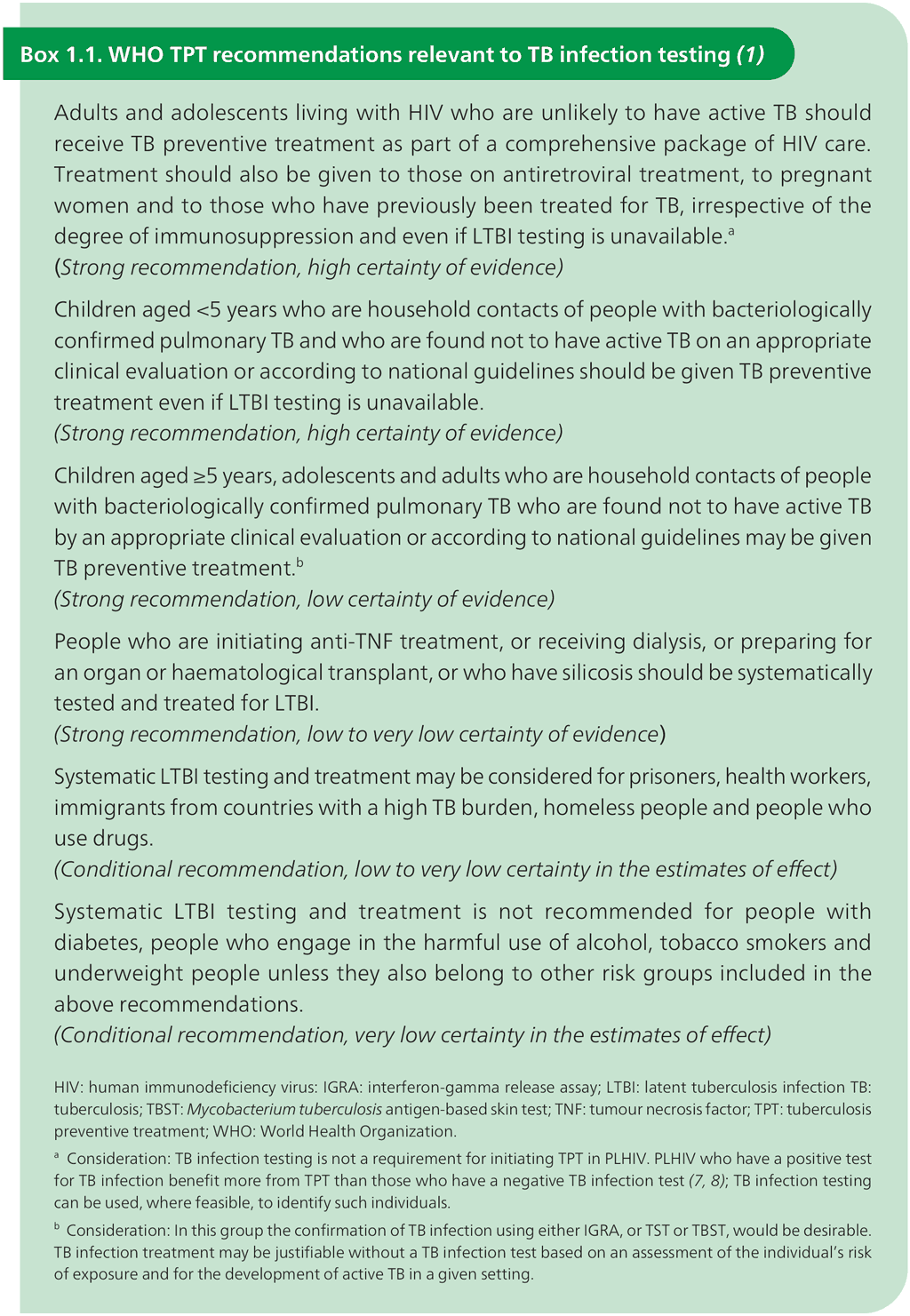Book traversal links for 1.1 Rationale for TB infection testing
Tuberculosis (TB) infection is a state of persistent immune response to Mycobacterium tuberculosis antigens with no evidence of clinically manifest TB disease (1). People with TB infection have no signs or symptoms of TB disease, are not infectious, have normal or stable images on chest X-ray (CXR), and have negative microbiological tests, if performed (1). It is estimated that about 25% of the world’s population has been infected with M. tuberculosis (2), of whom 5–10% will develop TB disease over their lifetime (3). This risk is much higher in those with certain epidemiological factors (e.g. recent contact with bacteriologically confirmed pulmonary TB), social characteristics (overcrowded and poorly ventilated living conditions, low socioeconomic status, or malnutrition) and demographical characteristics (e.g. very young children), or clinical conditions that compromise the immune system (e.g. HIV infection, or immunosuppressive medications) (3–6). TB preventive treatment (TPT) for people with these risk factors can provide important individual and public health benefits. However, implementing TPT raises various challenges in terms of programme prioritization, health care worker reluctance to treat asymptomatic persons, medication adherence, availability of appropriate drugs and formulations, costs, burden on health systems and individuals concerned, and access to free tests for TB infection. TPT can induce adverse drug reactions (although these are rarely serious) in people who are generally healthy. Hence, TPT is recommended only to groups at high risk of developing TB disease (1), in whom the benefits of TPT clearly outweigh the risks. Box 1.1 lists current World Health Organization (WHO) recommendations relevant to TPT provision.
In people of any given age (especially children and adolescents), health condition or epidemiological risk factor, the risk of TB disease is higher in those who have a positive TB infection test than in those with the same risk factors but a negative TB infection test (4–6). Furthermore, TB infection testing is useful because individuals who test positive are more likely to benefit from TPT than those who test negative (7, 8). Therefore, TPT will be of greatest individual and public health benefit if it is directed by an assessment of risk alongside the results of TB infection testing. Hence, extension of TPT to address global requirements creates a need to establish large-scale TB infection testing capacity.

 Feedback
Feedback